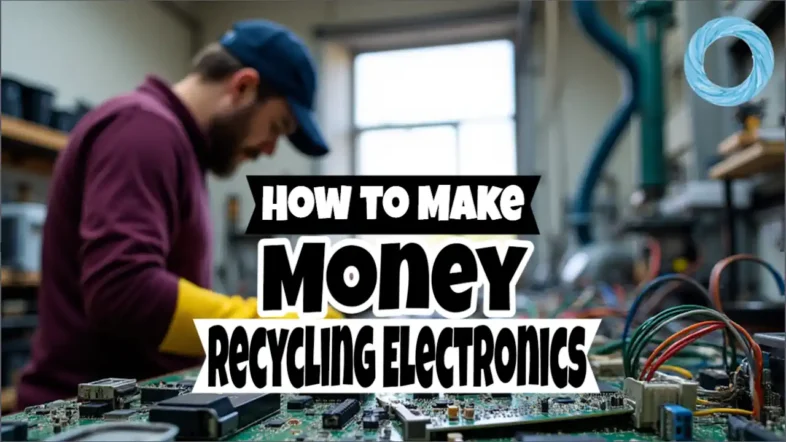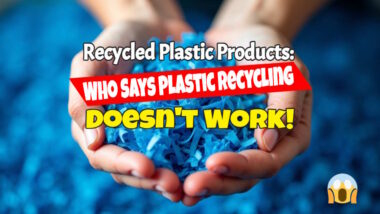To make money recycling electronics, you can sell devices that are still in working order, trade-in devices, or sell scrap materials from e-waste to recyclers. Focus on items like smartphones, tablets, laptops, and gaming consoles, as they often hold the most value, either for reuse or for their precious metals.
Top Takeaways for “How to Make Money Recycling Electronics”
- Recycling electronics can generate between $20-$300+ per device depending on type, age, and condition, with smartphones and laptops typically yielding the highest returns.
- The e-waste recycling market is projected to reach $62.5 billion by 2025, offering significant money-making opportunities from side hustles to full businesses.
- Properly wiping personal data and cleaning devices before selling can increase their value by up to 15-20%.
- Specialized electronics recycling can yield valuable materials including gold, silver, copper, and rare earth elements worth extracting.
- We Buy Used IT Equipment provides hassle-free solutions for turning your electronic waste into cash while ensuring responsible recycling practices.
That old drawer of outdated electronics gathering dust isn't just clutter—it's cash waiting to be claimed. In today's tech-driven world, the average American household has around $550 worth of unused electronics sitting idle, and tapping into this resource can create a steady stream of extra income.
With the right approach, recycling electronics can be surprisingly profitable, whether you're looking to make a quick buck from your own devices or build a sustainable side hustle. Let's dive into the lucrative world of e-waste recycling and uncover how to transform those forgotten gadgets into green in more ways than one.
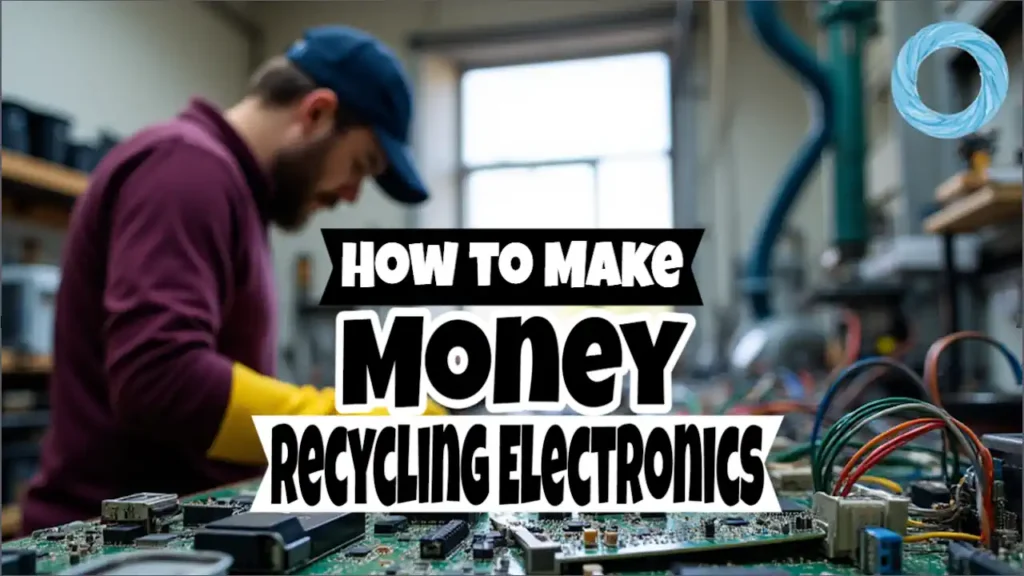
Turn E-Waste Into Cash: Lucrative Electronics Recycling Methods
The path to profiting from electronic waste offers multiple avenues depending on your time commitment, technical skills, and business aspirations. From the casual seller looking to declutter to the entrepreneurial recycler seeking a full-time income, there's money to be made at every level of involvement.
We Buy Used IT Equipment specializes in helping individuals and businesses turn unwanted electronics into cash while ensuring environmentally responsible disposal. Their streamlined process makes it easy to convert e-waste into income without the hassle of finding individual buyers or navigating complex recycling regulations.
The $62.5 Billion E-Waste Opportunity
The global electronics recycling market is experiencing explosive growth, projected to reach $62.5 billion by 2025 with a compound annual growth rate of 13.6%. This surge is driven by increasing awareness of environmental impacts, government regulations on e-waste disposal, and the rising value of recoverable materials. The average smartphone contains approximately $1.60 worth of precious metals, while a typical desktop computer houses around $7 worth of gold and other valuable materials. Discover 10 ways to reduce, reuse, and recycle to contribute to this growing market.
What makes this opportunity particularly accessible is the low barrier to entry for individuals. With minimal investment, you can begin collecting and selling electronic waste through various channels, potentially earning anywhere from a few hundred to several thousand dollars monthly depending on your approach and scale.
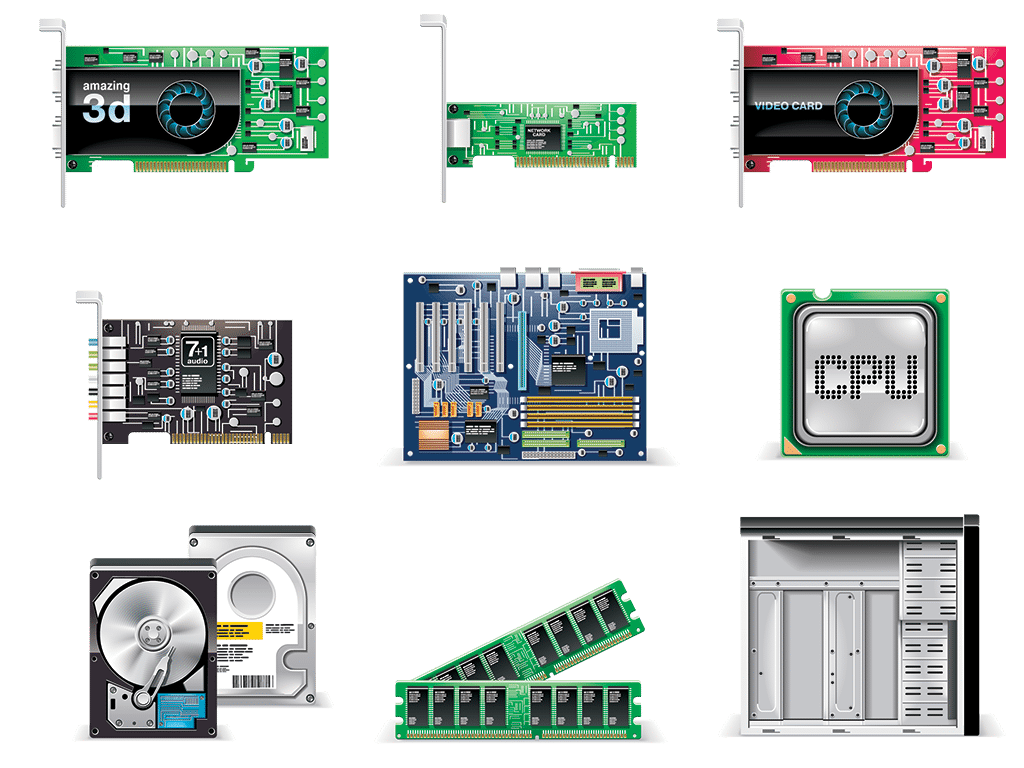
“Sell Used IT Equipment: 6 Steps To Take …” from exittechnologies.com and used with no modifications.
Environmental Impact of Electronics Recycling
Recycling electronics isn't just profitable—it's crucial for our planet's health. E-waste represents the fastest-growing waste stream globally, with only 17.4% being formally recycled. When electronics end up in landfills, they release toxic substances including lead, mercury, and cadmium that contaminate soil and water supplies.
By recycling just one million laptops, we can save energy equivalent to electricity used by 3,657 U.S. homes in a year. One ton of circuit boards can contain 40-800 times the concentration of gold found in gold ore, making urban mining through electronics recycling more efficient than traditional mining. This creates a rare win-win scenario where your profit-seeking activities directly contribute to environmental conservation.
5 Best Places to Sell Your Old Electronics
Knowing where to sell your devices can significantly impact your profits. Different platforms offer varying advantages depending on the type and condition of your electronics. Here's a breakdown of the most lucrative options available.
1. Online Buyback Programs
Online buyback services like Gazelle, BuyBackWorld, and Decluttr offer instant quotes and free shipping for your used electronics. These platforms specialize in processing high volumes of devices and typically pay via PayPal, direct deposit, or gift cards. The main advantage is convenience—simply enter your device details, receive an offer, ship using their prepaid label, and get paid once they verify the condition. Learn more about how to recycle used electronics for cash.
For example, a three-year-old iPhone in good condition might fetch $150-$300 through these services, while the same phone might only get $100-$200 at a physical trade-in location. The tradeoff for this higher payout is waiting 3-10 business days to receive payment after they receive your device.
2. Retail Trade-In Services
Major retailers including Best Buy, Walmart, and Apple operate trade-in programs that exchange your old electronics for store credit or gift cards. These programs offer immediate gratification—walk in with your device and walk out with credit you can use right away. Best Buy accepts the widest variety of electronics, from smartphones to gaming consoles and even appliances, while Apple offers premium value for their own devices.
The convenience of instant credit comes at a cost—payouts are typically 10-25% lower than what you might receive through online buyback programs. However, some retailers occasionally run promotions offering bonus credits that can make these programs more competitive. For more insights on recycling benefits, check out the top reasons for recycling.
3. Local Electronics Recyclers
Specialized electronics recycling facilities in your community often pay cash for devices with valuable components. These local businesses frequently offer better rates for bulk electronics or unusual items that online programs might not accept. They're particularly good options for selling computer parts, servers, networking equipment, and older electronics that still have value but aren't accepted by mainstream buyback services.
Building relationships with local recyclers can lead to ongoing income opportunities, especially if you expand into collecting electronics from others. Some facilities also offer revenue-sharing programs where you can earn a percentage of what they recover from the devices you bring in.
4. Online Marketplaces
Peer-to-peer platforms like eBay, Facebook Marketplace, and Craigslist typically yield the highest potential returns but require more effort. These marketplaces eliminate the middleman, allowing you to set your own prices and negotiate directly with buyers. High-end or rare electronics can sell for 30-50% more than what buyback programs offer.
The downsides include managing listings, communicating with potential buyers, handling shipping or meetups, and dealing with potential scams or returns. For valuable items like recent MacBooks or gaming consoles, the extra effort can translate to significantly higher profits—often $50-$200 more per item than using buyback services.
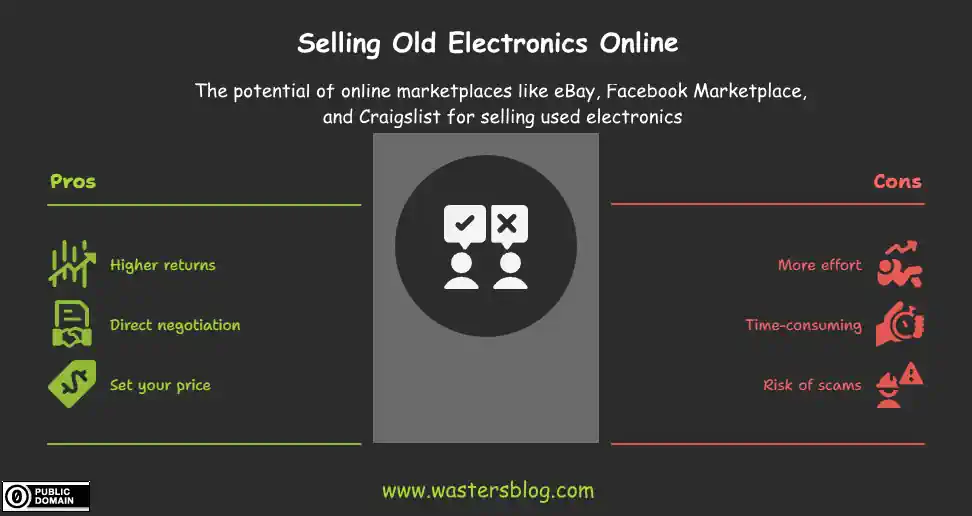
5. Manufacturer Take-Back Programs
Many device manufacturers including Samsung, Dell, and HP operate their own recycling programs that sometimes include cash incentives or discounts on new purchases. These programs typically offer competitive values for their own brand products and often provide prepaid shipping labels for convenience. The main advantage is reliability—you're dealing directly with the original manufacturer who has a vested interest in responsible recycling.
While manufacturer programs might not offer the highest cash values, they frequently provide additional perks like discount coupons for future purchases. For example, Apple's Trade-In program might offer a $200 gift card for your old iPhone plus a 10% discount on a new device, potentially making it more valuable than a straight cash offer elsewhere. For more ways to maximize your benefits, consider exploring 10 ways to reduce, reuse, and recycle effectively.
Which Electronics Are Worth the Most Money?
Not all electronics offer equal returns, and knowing which devices to prioritize can dramatically increase your profits. The most valuable categories consistently deliver higher pay-outs whether you're selling a few personal items or building a recycling business.
Smartphones and Their Value Retention
Smartphones represent the sweet spot in electronics recycling due to their high value-to-size ratio and rapid turnover rate. iPhones typically retain 40-60% of their original value after two years, with premium models like the Pro and Pro Max versions commanding the highest prices. Android flagships from Samsung, Google, and OnePlus follow closely behind, with devices less than three years old fetching $100-$350 depending on condition and specifications.
What makes smartphones particularly lucrative is their widespread adoption and frequent replacement cycles. Even damaged phones have value—devices with cracked screens might still sell for 40-60% of working models, while water-damaged units can yield 15-30% of their functioning counterparts' value. Carrier-unlocked phones typically command a 15-20% premium over carrier-locked versions.
Laptops and Computers
Laptops and desktop computers offer substantial recycling value due to their component density and easily separable parts. Apple MacBooks consistently deliver the highest returns, with three-year-old models often selling for $300-$700 depending on specifications. High-performance Windows laptops with dedicated graphics cards from manufacturers like Dell XPS, HP Spectre, and Lenovo ThinkPad series can fetch $200-$500 even when several years old.
The real advantage of computers lies in component-level recycling. A non-functioning laptop might be worth just $20-$50 intact, but its individual parts—RAM, SSD, display, keyboard, and battery—could collectively sell for $100-$200 when harvested and sold separately. Server equipment is particularly valuable, with enterprise-grade servers sometimes worth $500-$2,000 even when outdated by business standards.
Gaming Consoles and Equipment
Gaming hardware maintains exceptional value due to strong demand in secondary markets and the durability of these devices. Current-generation consoles like PlayStation 5 and Xbox Series X can sell for 70-85% of their retail price even after a year of use, while previous-generation systems like PS4 Pro and Xbox One X typically fetch $150-$250. Limited edition consoles often command premium prices, sometimes exceeding their original retail value.
Gaming peripherals including controllers, headsets, and specialized keyboards also retain significant value. High-end gaming PCs and components deserve special attention, with graphics cards alone sometimes worth $200-$600 depending on the model. The gaming market's passionate community creates a reliable demand for used equipment, making this category exceptionally profitable for recyclers.
Tablets and E-Readers
Tablets offer another profitable category with iPad models leading the pack in value retention. A two-year-old iPad Pro might sell for $350-$600 depending on size and specifications, while standard iPads typically fetch $150-$300. Premium Android tablets from Samsung's Galaxy Tab S series maintain respectable value at $100-$300 depending on age and model, though mid-range Android tablets depreciate more rapidly.
E-readers like Amazon Kindle and Kobo devices tend to hold their value surprisingly well due to their specialized purpose and durability. Current Kindle Paperwhite models might resell for $70-$100, while premium versions like the Oasis can command $150-$200 on secondary markets. The key advantage of tablets and e-readers is their relatively stable condition—with no moving parts, they often remain fully functional for many years. For those interested in sustainable practices, exploring zero waste disposal methods can provide additional insights into eco-friendly usage and disposal.
How to Prep Your Devices for Maximum Value
Proper preparation can increase the value of your electronics by 15-30%, transforming a mediocre payout into a substantial one. The three key areas—data removal, physical condition, and completeness—all significantly impact buyer perception and willingness to pay premium prices. Additionally, understanding zero waste disposal methods can further enhance your approach to recycling electronics responsibly.
Data Wiping Essentials
Securely erasing personal data is critical both for your privacy and for maximizing device value. For smartphones and tablets, perform a factory reset after backing up your data—this is typically found in the Settings menu under System or General Management. On iPhones and iPads, sign out of iCloud and disable Find My iPhone before resetting to prevent activation lock issues that can render the device worthless to buyers.
For computers, standard deletion isn't sufficient as files can be recovered with specialized software. Windows users should use the built-in “Reset this PC” feature with the “Remove everything” and “Clean the drive” options selected. Mac users can boot into Recovery Mode (Command+R during startup) and use Disk Utility to erase the drive, then reinstall macOS. For added security on sensitive data, consider using specialized wiping software like DBAN for Windows or disk utility secure erase options for Macs that perform multiple overwrite passes. If you're interested in learning more about recycling, explore the top reasons for recycling to understand its importance and benefits.
Cleaning and Presentation Tips
A thorough cleaning can dramatically improve perceived value, often adding $20-$50 to your selling price. Use microfiber cloths with electronics-safe cleaning solutions (70% isopropyl alcohol works well) to remove fingerprints, dust, and grime from screens and surfaces. Pay special attention to often-neglected areas like ports, speaker grilles, and keyboard crevices—compressed air can help dislodge stubborn debris without causing damage. For more insights, explore the top reasons for recycling and how it can add value.
Finding Original Packaging and Accessories
Including original packaging and accessories can increase your device's value by 10-25%. Original boxes, chargers, cables, manuals, and unused earbuds all contribute to a perception of completeness that buyers are willing to pay premium prices for. Even if you don't have original packaging, including compatible charging cables and adapters makes your device more immediately usable, increasing its appeal to potential buyers.
For maximum value, organize everything neatly and take clear photos of all included items when creating listings. If selling through buyback programs, mention all included accessories when getting your quote—many services offer additional payment for these items but won't automatically include them in estimates unless specified. For more information on how to maximize your recycling efforts, consider these 10 ways to reduce, reuse, and recycle.

Start a Profitable Electronics Recycling Side Hustle
Converting occasional device selling into a sustainable income stream requires strategic approaches that scale beyond your personal electronics. With minimal start-up costs and flexible time commitments, electronics recycling represents an accessible side hustle with substantial growth potential.
The most successful electronics recycling entrepreneurs combine multiple methods, creating diverse revenue streams that maximize profits from each device based on its condition and market value. With proper planning, a dedicated electronics recycling operation can generate $1,000-$5,000 monthly while maintaining flexible hours.
1. Neighbourhood Collection Service
Establishing yourself as the local electronics recycling solution creates a steady stream of inventory with minimal acquisition costs. Start by distributing flyers in your neighbourhood offering free pickup of unwanted electronics, highlighting both the convenience and environmental benefits. Create simple business cards with your contact information and leave them at community centres, local businesses, and apartment complex offices.
Most people are happy to give away electronics they no longer need, especially when assured they'll be responsibly recycled. Once you've established regular collection routes, you can sort items into those worth refurbishing for resale, those valuable for parts, and those best sent to specialized recyclers for material recovery.
Success Story: Sarah from Portland started collecting unwanted electronics from her neighbourhood using just her sedan and some flyers. Within six months, she was making $1,200 monthly by reselling working devices and parts while responsibly recycling the rest. Her zero-cost acquisition model meant nearly all revenue translated directly to profit.
To maximize your collection efficiency, consider coordinating with local businesses to establish drop-off points or partnering with community organizations to host electronics recycling events. These approaches multiply your reach while minimizing the time spent collecting individual items. If you're interested in learning more about how to make money from recycling, check out this guide on recycling used electronics for cash.
2. Component Harvesting for Resale for Gold Content and Other Valuable Metals
Component-level recycling offers significantly higher returns than selling complete non-functioning devices. With basic tools and knowledge, you can extract valuable parts including RAM, processors, graphics cards, storage drives, and display panels that often retain 40-70% of their original value even when removed from outdated systems. A non-functioning laptop worth $30 intact might yield $100+ in working components.
Beyond functional parts, circuit boards contain valuable metals including gold, silver, palladium, and copper. While advanced metal recovery requires specialized equipment, you can still profit by selling sorted circuit boards to specialized refiners. Motherboards typically contain the highest precious metal content, followed by RAM sticks and high-end processors. Current market rates for circuit board scrap range from $1-$25 per pound depending on the type and metal content.
Learn more about Component harvesting by reading our ebook:
Check Pricing for Our Guide Here3. Refurbishing and Flipping Devices
Refurbishing represents the highest-value approach to electronics recycling, with potential profit margins of 50-200% on successful repairs. Common issues like cracked screens, battery degradation, and storage upgrades typically require minimal technical skill but dramatically increase device value. A smartphone purchased for $50 with a damaged screen might sell for $150-$200 after a $30 screen replacement.
Start with simple, high-demand repairs like smartphone screen replacements and battery swaps. YouTube tutorials and websites like iFixit provide detailed repair guides for the most popular devices. As your skills grow, you can tackle more complex issues like logic board repairs or data recovery from damaged drives, services that command premium prices in the marketplace.
Beyond repairs, simple optimization can significantly increase selling prices. Reinstalling clean operating systems, upgrading to solid-state drives in older computers, and maximizing RAM can transform sluggish devices into snappy performers that justify higher asking prices. For example, a slow, outdated laptop selling for $100 might fetch $250-$300 after a $50 SSD upgrade and fresh operating system installation.
4. Business E-Waste Management
Small and medium businesses represent gold mines of recycling opportunities, regularly upgrading entire fleets of computers, phones, and networking equipment. Offering free pickup and data destruction services positions you as a valuable solution provider while giving you access to higher-quality devices in larger quantities. Many businesses will happily provide documentation of their equipment donations for tax purposes, creating a win-win scenario where you acquire valuable inventory at no cost.
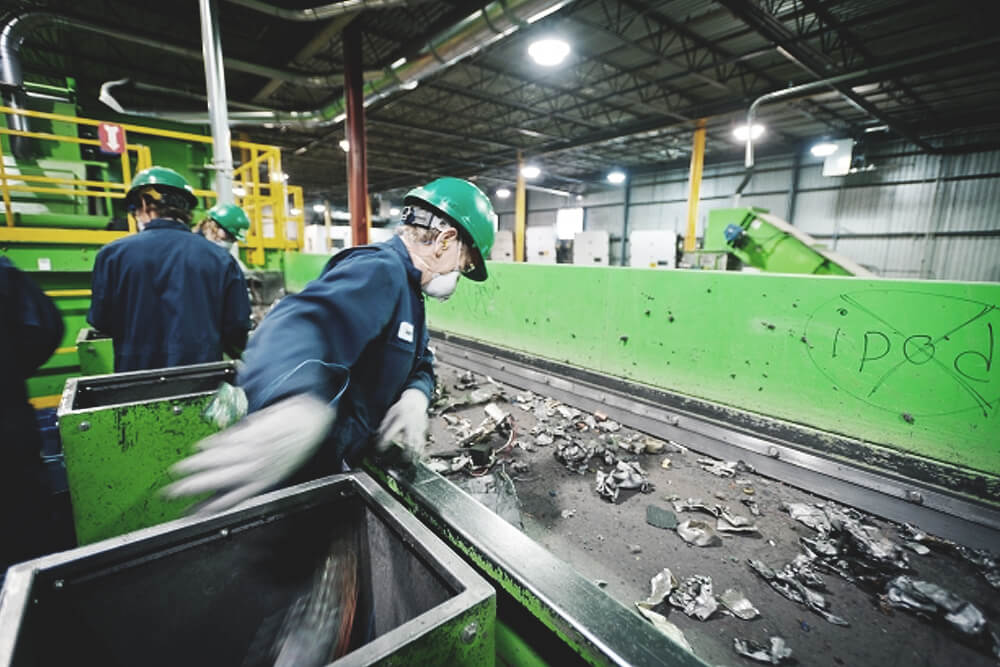
“How Businesses Dispose of E-Waste | AG …” from allgreenrecycling.com and used with no modifications.
Turn Technical Skills Into Recycling Profits
Converting technical knowledge into profitable electronics recycling requires strategic skill development focused on high-demand repairs and value-adding modifications. The most successful electronics recyclers combine technical expertise with market awareness to maximize returns on every device they handle. Learn more about the top reasons for recycling and how it can enhance your recycling efforts.
Basic Repair Skills That Boost Value
Mastering a few fundamental repair techniques can dramatically increase your recycling profits without requiring extensive technical training. Screen replacements for smartphones and tablets typically offer the highest return on investment, with repairs taking 15-30 minutes once you've developed the skill. Battery replacements represent another high-profit opportunity, addressing the most common failure point in portable electronics while requiring minimal tools and expertise. Storage upgrades, particularly replacing traditional hard drives with SSDs in laptops and desktops, can transform sluggish devices into desirable products that command premiums of $100-$200 over non-upgraded alternatives. For more insights, explore the best zero waste disposal methods to complement your repair skills.
Testing Equipment Worth Investing In
- Multimeters ($20-$50): Essential for diagnosing power issues and testing components
- USB power meters ($15-$30): Verify charging circuits and battery health
- Hard drive/SSD testers ($30-$100): Assess storage device health and securely wipe data
- PSU testers ($20-$40): Quickly identify faulty power supplies without risking other components
- Infrared thermometers ($25-$50): Locate overheating components causing device failures
Quality testing equipment pays for itself quickly by preventing costly mistakes and enabling accurate diagnosis. When purchasing a non-functioning device for parts or repair, proper testing tools help determine whether issues are minor and profitable to fix or indicative of more serious problems best avoided.
Component-level testing allows you to salvage valuable parts from otherwise worthless devices. For example, a laptop with a damaged motherboard might still contain a perfectly functional display, keyboard, battery, and storage drive collectively worth $100-$150 even when the complete device has no value.
The most valuable testing skill is the ability to accurately identify which non-working devices are worth repairing. Experienced recyclers develop efficient triage processes, quickly determining whether repair costs will be outweighed by the increased resale value. This assessment skill often proves more valuable than technical repair abilities in maximizing profitability.
Learning Resources for Electronics Repair
Building your electronics repair skills doesn't require formal education—numerous free and low-cost resources provide comprehensive training for specific device repairs. YouTube channels like Louis Rossmann, iPad Rehab, and JerryRigEverything offer detailed repair tutorials covering everything from basic screen replacements to complex logic board repairs. Website iFixit provides step-by-step repair guides with high-resolution photos for thousands of devices, along with difficulty ratings to help you progress from beginner-friendly repairs to more advanced techniques. For those interested in sustainable practices, consider exploring 10 ways to reduce, reuse, and recycle electronics responsibly.
For those seeking structured learning, online courses from platforms like Udemy and Coursera offer specialized electronics repair certifications for $20-$200. Local community colleges frequently offer affordable electronics courses covering soldering, circuit theory, and troubleshooting fundamentals. Consider joining online forums like r/ElectronicsRepair where active communities provide real-time troubleshooting assistance and advice on challenging repairs. Additionally, you might explore ways to reduce, reuse, and recycle electronic components to further your understanding of sustainable practices in electronics.
Legal Requirements for Electronics Recycling Businesses
Operating a compliant electronics recycling business requires navigating various regulations designed to ensure proper handling of potentially hazardous materials. The legal landscape varies significantly by location, with state and local requirements often exceeding federal standards. At a minimum, most electronics recycling operations need a basic business license, while larger operations may require specialized permits depending on the volume and types of materials handled. For those interested in exploring financial opportunities in this field, consider reading about why recycling electronics could be your next financial opportunity.
Data privacy represents another critical legal consideration. When handling devices containing personal information, you're obligated to ensure proper data destruction under various privacy laws including HIPAA (for medical information) and FACTA (for financial information). Failure to properly sanitize devices before resale or recycling can result in significant penalties and legal liability.
Environmental compliance becomes increasingly important as your operation grows. The Resource Conservation and Recovery Act (RCRA) governs hazardous waste handling in the US, with specific provisions covering batteries, mercury-containing components, and certain circuit board types. For operations handling large volumes, EPA notification and regular reporting may be required.
- Business licenses and permits (varies by locality, typically $50-$500 annually)
- Waste handling permits (required for operations exceeding certain volume thresholds)
- Data destruction certification (recommended for handling business e-waste)
- R2 or e-Stewards certification (optional but valuable for attracting business clients)
- Insurance coverage (general liability and specialized e-waste handling coverage)
The most successful electronics recycling entrepreneurs start small, operating under general business licenses while learning industry best practices. As operations grow, gradual investment in proper certifications and compliance measures builds credibility with business clients and opens access to higher-volume opportunities.
Permits and Certifications
Industry certifications significantly enhance your credibility and open doors to more profitable business relationships. R2 (Responsible Recycling) and e-Stewards represent the gold standards in electronics recycling certification, verifying your operation follows environmentally sound practices and proper data security protocols. While these certifications require substantial investment ($5,000-$15,000 initially plus ongoing compliance costs), they enable partnerships with government agencies and corporations that exclusively work with certified recyclers.
For smaller operations, consider starting with more accessible certifications like NAID AAA Certification for data destruction services, which costs $2,000-$3,000 but immediately positions you as a trusted provider for businesses with data security concerns. Local business registrations and permits typically cost $50-$500 depending on your location and operation size, representing the minimum legal requirement for collecting and reselling used electronics.
Environmental Regulations
Environmental compliance becomes increasingly complex as your operation scales, with regulations covering everything from storage practices to transportation and final disposal of hazardous components. The EPA's Universal Waste Rule provides some regulatory relief for common electronic components like batteries and mercury-containing devices, but full compliance requires careful documentation of material flows and proper training for all staff handling potentially hazardous items. Many states have implemented landfill bans for electronics and require recyclers to maintain chain-of-custody documentation proving proper handling of materials from collection through final processing.
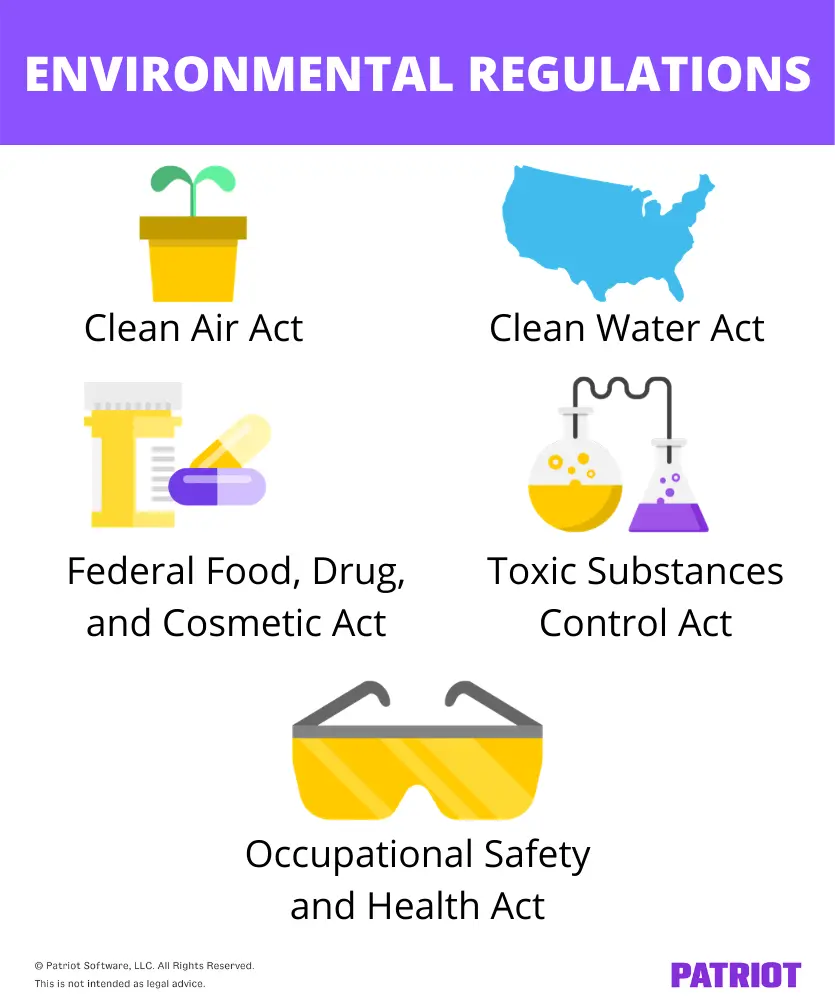
“Environmental Regulations | Clean Water …” from www.patriotsoftware.com and used with no modifications.
Proper Handling of Hazardous Materials
Safe handling protocols protect both your workers and your business from the hazards present in certain electronic components. Lithium-ion batteries pose fire risks if damaged or improperly stored and should be handled with insulated tools and stored in fireproof containers with terminals covered.
Older CRT monitors and televisions contain significant amounts of lead in their glass components, requiring careful handling to prevent breakage and lead dust exposure.
Mercury-containing components like certain switches and backlights require special containment procedures if damaged.
Implementing a comprehensive safety program with proper training, personal protective equipment, and clearly documented procedures helps prevent accidents while demonstrating your commitment to responsible recycling practices.
Make Every Device Count: Maximizing Your Recycling Profits
Success in electronics recycling comes from maximizing the value of every device that passes through your hands. This means developing multiple processing pathways—working devices get refurbished and resold, partially functional units get harvested for valuable components, and truly non-functional items get properly recycled for material recovery.
By implementing efficient sorting protocols and maintaining relationships with various buyers specializing in different categories, you can ensure optimal returns regardless of device condition. Discover the top reasons for recycling to further enhance your recycling strategies.
Remember that knowledge represents your greatest competitive advantage in this industry. Staying current on device values, repair techniques, and material prices allows you to make informed decisions that maximize profits while maintaining responsible recycling practices.
Whether you're looking to make a few hundred dollars from your own unused electronics or building a substantial recycling business, the combination of environmental benefit and financial opportunity makes electronics recycling an exceptionally rewarding pursuit.
Frequently Asked Questions
Electronic recycling raises many questions for newcomers looking to turn e-waste into income. These answers address the most common questions based on current market conditions and industry best practices.
How much can I make recycling an old laptop?
A working laptop less than five years old typically fetches $100-$300 through buyback programs or $150-$400 through direct sales platforms, depending on specifications and the condition of the device.
Non-functional laptops still hold value—component harvesting can yield $50-$150 in parts including RAM, storage drives, displays, and keyboards. Even completely dead laptops are worth $5-$15 to specialized recyclers for material recovery.
Apple MacBooks consistently command premium prices, with working models often selling for 30-50% more than comparable Windows laptops of similar age.
Do I need special training to start an electronics recycling business?
No formal training is required to begin collecting and reselling electronics, though developing basic testing and repair skills significantly increases profitability. Many successful electronics recyclers start with no technical background, learning through online tutorials and hands-on experience.
As your operation grows, investing in training related to data security, hazardous material handling, and specific repair techniques becomes increasingly valuable. The most important skills initially are organizational systems for tracking inventory and basic business operations like marketing and customer service.
What's the most profitable electronic item to recycle?
Cell phones offer the highest profit-to-effort ratio in electronics recycling due to their small size, high component density, and strong demand in secondary markets.
Recent iPhones (less than 3 years old) typically yield $150-$400 depending on model and condition, while flagship Android devices from Samsung, Google, and OnePlus fetch $100-$300. Even older phones retain surprising value—phones 5+ years old often sell for $20-$50 or can be sold to specialized recyclers who pay $0.50-$1.50 per unit for material recovery.
Beyond phones, enterprise networking equipment and servers offer exceptional returns for those with technical knowledge to properly test and market these items.
Relatively recent enterprise-grade switches, routers, and servers can sell for hundreds or even thousands of dollars to IT departments seeking cost-effective replacements for identical equipment.
Is it legal to extract gold from circuit boards at home?
Warning: Home-based precious metal recovery involves hazardous chemicals including strong acids that produce toxic fumes. These processes create significant safety and environmental risks that typically outweigh potential profits for small-scale operations. Most jurisdictions require special permits and safety equipment for chemical processing of electronic waste.
While it's legal to manually disassemble electronics and sort components for recycling, chemical extraction of precious metals typically requires permits and proper facilities.
The most profitable and safe approach for individuals is selling circuit boards to specialized refiners who pay $3-$25 per pound depending on the board type and precious metal content.
High-grade circuit boards from servers, telecommunications equipment, and older computers contain the most valuable metals.
These can be identified by their gold-plated connectors and components, with full-coverage gold plating indicating particularly valuable boards. Many recyclers sort circuit boards into grade categories based on visible gold content and complexity.
For most individuals, the equipment, chemicals, permits, and safety systems required for compliant precious metal recovery make it financially impractical compared to selling to established refiners who operate at scale with proper environmental controls.
How do I find businesses willing to pay for e-waste removal?
Target small to medium businesses undergoing technology upgrades, as they frequently lack established recycling channels and face data security concerns with outdated equipment.
Law firms, medical offices, accounting practices, and real estate agencies typically maintain 3-5 year upgrade cycles for their technology and value convenient, secure disposal options.
Create simple marketing materials emphasizing free pickup, data security, and environmental responsibility, then distribute these to local business parks and professional offices.
Networking through local business associations, chambers of commerce, and industry-specific groups provides valuable connections to decision-makers responsible for equipment disposal. Offering free electronic waste audits helps businesses identify recyclable assets while demonstrating your professionalism and expertise.
For larger opportunities, contact IT service providers who often assist clients with equipment upgrades but may lack recycling solutions.
Once established with a few business clients, request referrals and testimonials to build credibility with similar organizations. The most successful e-waste collectors develop consistent relationships with businesses, providing regular pickup services that coincide with equipment replacement cycles.
This steady flow of business-grade equipment typically offers higher quality and quantity than consumer sources while requiring less acquisition effort.
Looking to get started recycling your own electronic waste? We Buy Used IT Equipment provides hassle-free solutions for turning your unwanted devices into cash while ensuring environmentally responsible recycling.
Recycling electronics not only helps the environment but can also be a profitable venture. By properly disposing of electronic waste, you can reduce pollution and conserve resources. One of the best zero waste disposal methods includes recycling old gadgets and devices, which can be repurposed or sold for parts. This approach not only minimizes waste but also offers an opportunity to earn money from items that would otherwise be discarded.
Learn more about Component harvesting by reading our ebook:
Check Pricing for Our Guide Here

